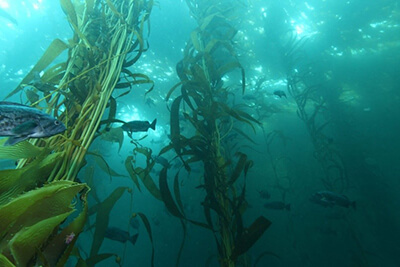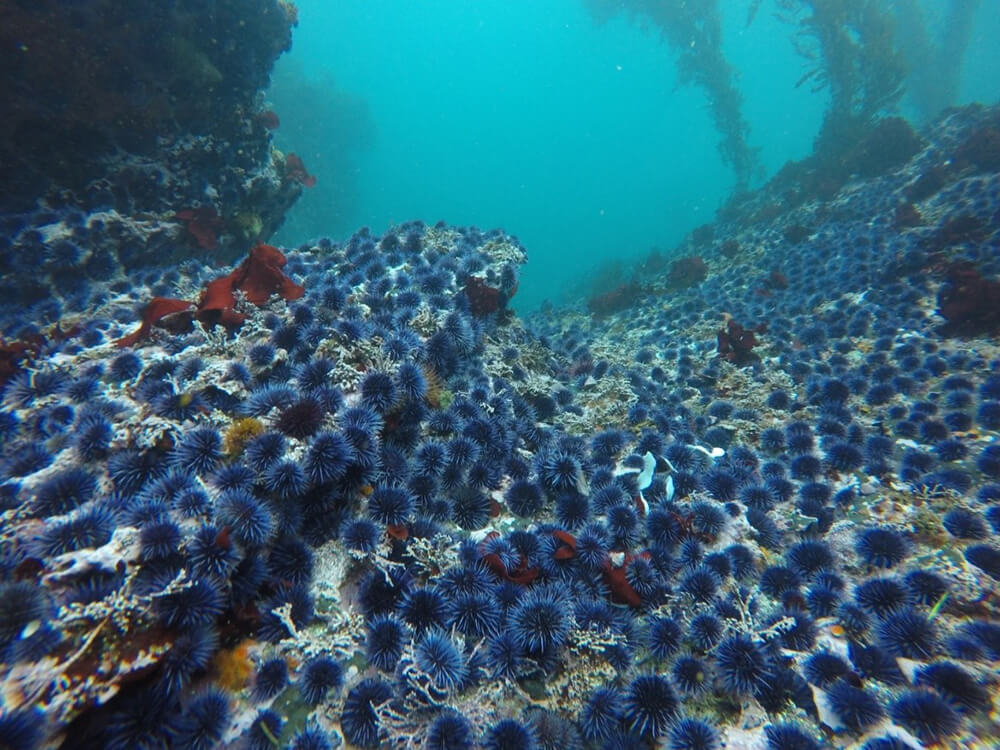Kelp Forest Dynamics

Conservation Issue
Monitoring kelp forests is necessary for further understanding of how changes in kelp canopy cover will impact Monterey Bay National Marine Sanctuary (MBNMS) resources.
Description
Sanctuary staff are concerned about the recent loss of kelp forest cover in California and a co-occurring increase in abundance of purple sea urchins, which contribute to overgrazing kelp forests. The recent combination of multiple marine heatwaves and increased herbivory contributed to the decline of kelp forests throughout California.
Data and Analysis Needs
- Annual and seasonal kelp canopy cover estimates
- Annual SCUBA surveys of remnant kelp forests to assess stability and the potential for resistance andresilience to further declines
- Surveys of urchins to determine densities, size structure, reproductive capacity, and likelihood ofsurvival
Potential Products
- Map of kelp canopy cover and estimates of maximum cover on an annual basis
- Status and trend plots of urchin densities at multiple locations
Suggested Scientific Approach and Actions
- Collaborations between agency and academic ecologists to characterize the relationship between changing ocean conditions, kelp cover, and herbivory
- Establish and maintain monitoring programs to detect changes in biological resources within remnantand former kelp forest sites
- Analyze monitoring data to create status and trends for key indicators of kelp forest health
Supplementary Information
MBNMS Research Advisory Panel’s response to request from MBNMS Advisory Council on iconic kelp
Key Partners
California Department of Fish and Wildlife, Ocean Protection Council, University of California Santa Cruz, Stanford University, California State University Monterey Bay, Partnership for Interdisciplinary Studies of Coastal Oceans

For more information about this assessment, contact Steve.Lonhart@noaa.gov.

